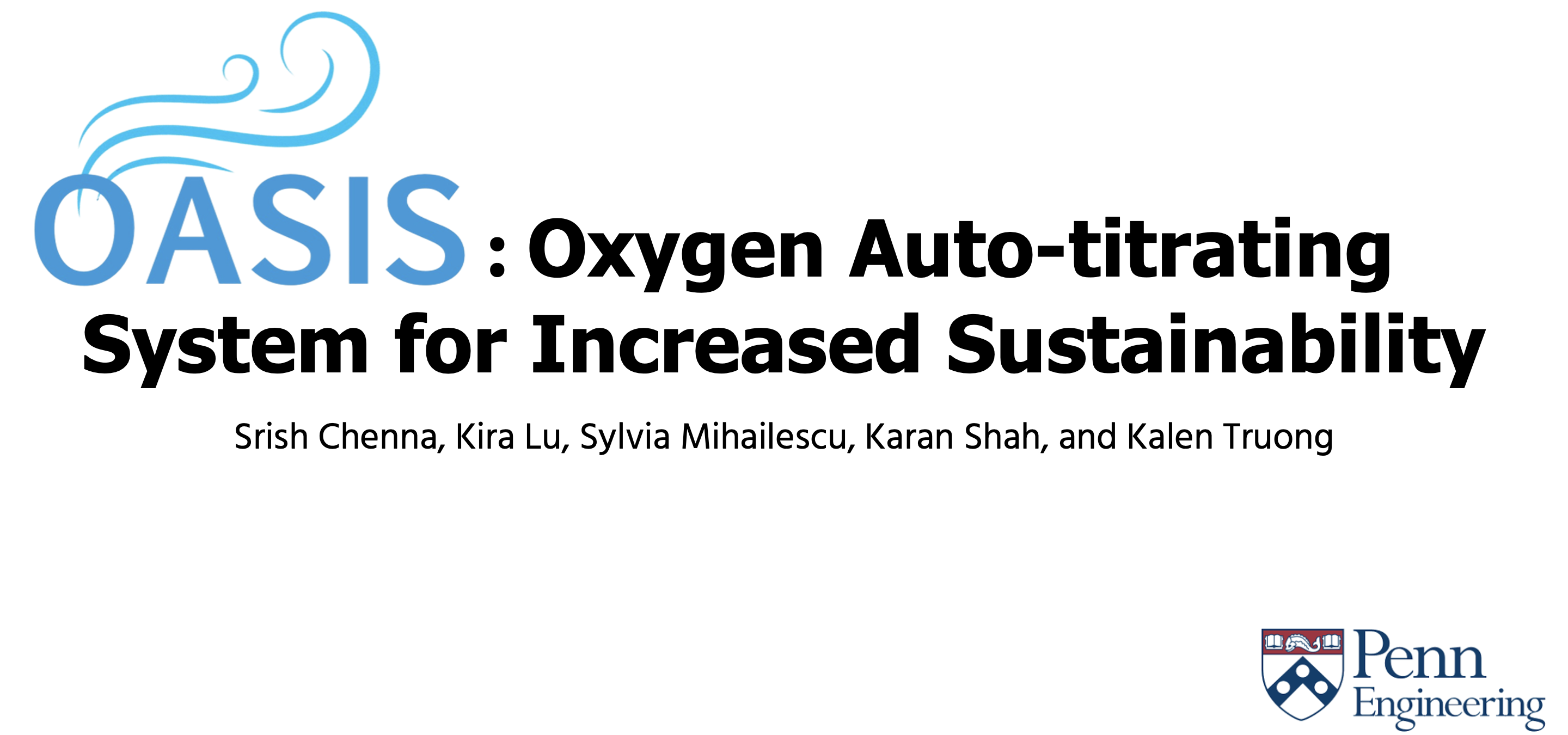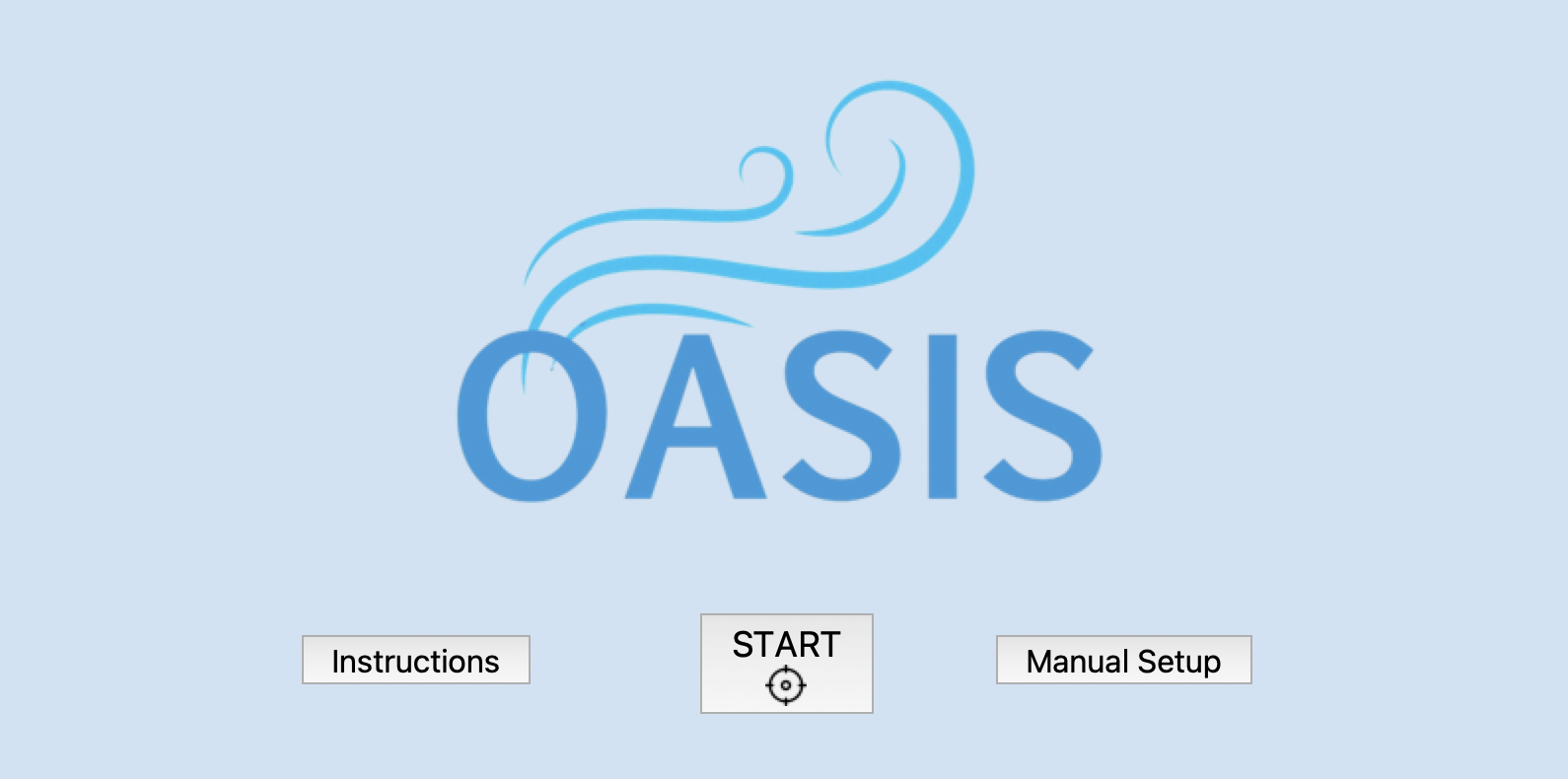OASIS
Python, multi-threading, Automation
The Oxygen Auto-Titrating System for Increased Sustainability (OASIS) was my Senior Design Project, focused on automating oxygen delivery to reduce costs and conserve usage. I was responsible for all software-related processing of OASIS, handling both frontend and backend development. This yearlong effort led to numerous achievements, accomplishments, and memories!

Awards
2024 John Hopkins Healthcare Design Competition, Global Track - Finalist
($1000, 3rd out of 193 teams)
Penn Wharton Innovation Fund - Validation Award ($500)
Background
Oxygen is the most commonly used drug, necessary for treating a wide range of conditions including respiratory illness and trauma.1,2 The current standard for oxygen usage is manual titration, where a healthcare provider re-evaluates a patient’s blood oxygenation level, or SpO2, and manually turns the flowmeter knob to change the oxygen flow rate. Low-resource settings often face intermittent oxygen access exacerbated by limited healthcare personnel, as oxygen is overused when a patient’s condition improves but healthcare providers are not available to decrease the flow rate. Our solution — OASIS, or Oxygen Auto-titrating System for Increased Sustainability — is an affordable, automatic oxygen titration system that adjusts oxygen flow rate based on real-time patient SpO2 values, limiting oxygen overuse. With OASIS, patients receive oxygenation that matches their live oxygen needs, and healthcare providers no longer have to constantly check patients’ SpO2 values. Our oxygen flow rate modulation algorithm and easy-to-use Graphical User Interface (GUI) are integrated with our hardware components for an accessible product focused on oxygen conservation. Our results show a 0.24 L/min error in flow rate modulation, comparable to human error present when turning the flowmeter knob.
Design
Software
Python Tkinter Package and backend was developed with threading processes.
